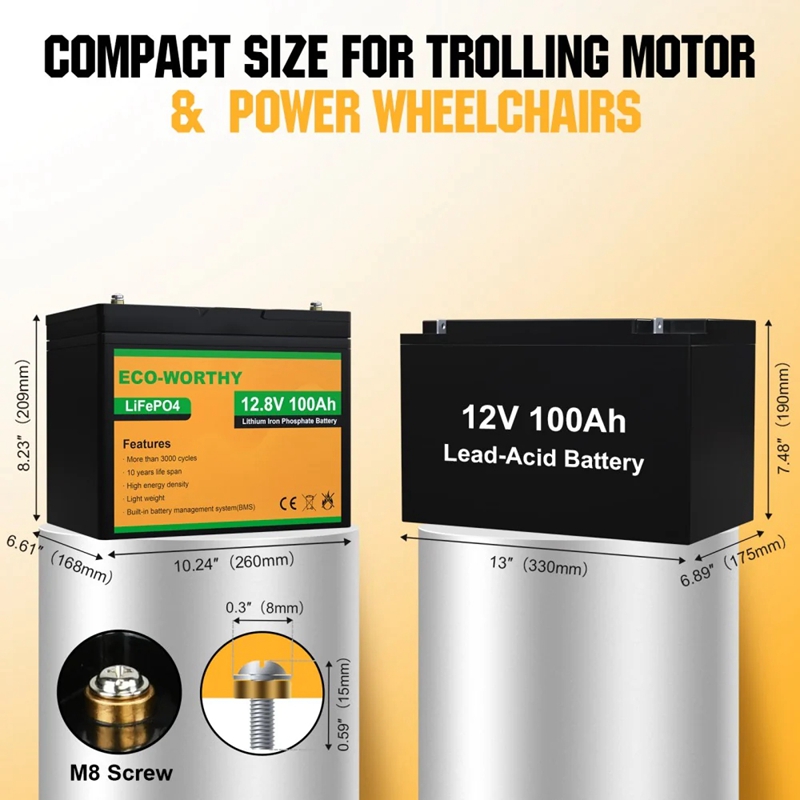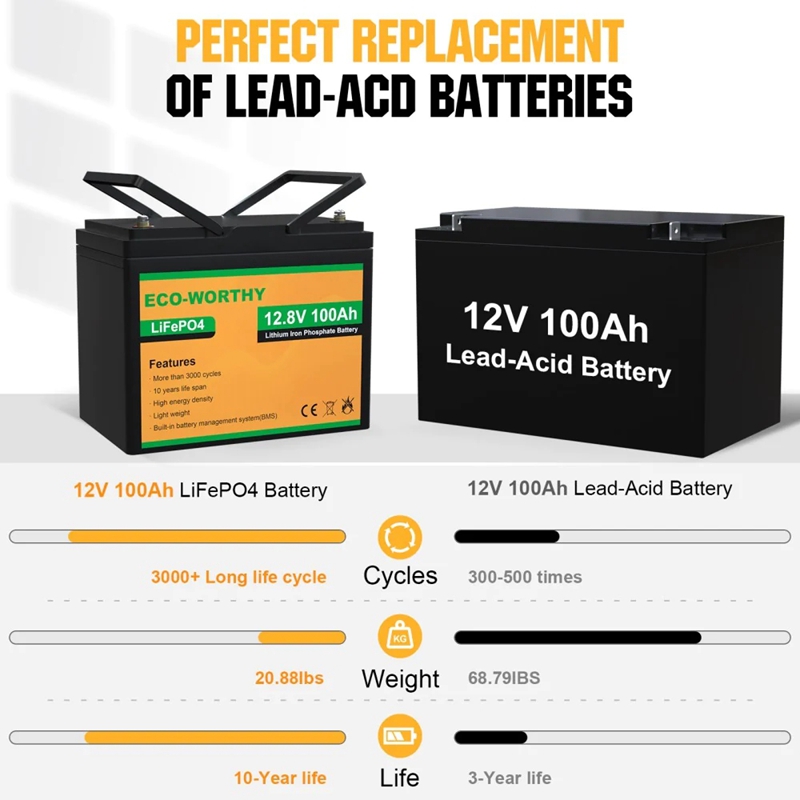In today's fast-paced world, batteries play an integral role in powering various electronic devices. Among the most popular are lithium and lead-acid batteries. While both these batteries have the ability to store and provide energy, they have different characteristics and unique advantages in different applications. This blog aims to shed light on the key differences between lithium and lead-acid batteries, exploring their composition, performance and environmental impact.
Lithium batteries, as the name suggests, utilize lithium compounds as the primary active material. This lightweight metal provides high energy density, making the battery compact, lightweight and easy to install, and the ECO-WORTHY 100Ah LiFePO4 battery is lighter than a lead-acid battery of the same capacity. Our 100Ah LiFePO4 battery weighs 21.16 lbs, which is only 1/3 the weight of a lead-acid battery of the same size. it's easier to carry around, can be installed at any location, has no risk of leakage, and is safer to use, making it suitable for use in portable electronics and electric vehicles. Lead-acid batteries, on the other hand, consist of lead-based electrodes immersed in a sulfuric acid electrolyte. Although lead-acid batteries are less efficient in terms of energy density, they are capable of delivering high currents, making them ideal for applications that require short bursts of power, such as starting an engine.

ECO-WORTHY Li-FePO4 batteries can reach 80% of their capacity after one hour of charging, whereas lead-acid batteries can only reach 20% under the same conditions. When charging time is limited, choosing a lithium battery allows you to get enough energy faster.
One of the main advantages of lithium batteries is their excellent energy density. Because lithium batteries can store more energy per unit weight or volume, devices can run for longer periods of time without frequent recharging. As a result, lithium batteries are particularly suited for smartphones, laptops and electric vehicles that require constant power. Conversely, lead-acid batteries have a lower energy density but excel in their ability to deliver high currents. This makes them a popular choice for starting vehicles, uninterruptible power supplies (UPS) and backup power systems.
Lithium batteries typically outperform lead-acid batteries in terms of cycle life, which is the number of charge/discharge cycles a battery can withstand before its capacity drops significantly. Lithium batteries can typically withstand more cycles than lead-acid batteries, making them durable and long-lasting, with a lifespan of 4,000 to 10,000 hours. Additionally, lithium batteries require little to no maintenance, as they do not require regular water refilling or specific charge/discharge protocols. Lead-acid batteries, on the other hand, require occasional maintenance such as adding distilled water and monitoring or adjusting electrolyte levels and specific gravity.
Lithium batteries are often touted as a greener alternative because of their lower environmental impact. They do not contain heavy metals such as lead and are easier to recycle. However, the extraction and processing of lithium has its own environmental issues. In contrast, lead-acid batteries contain lead, a hazardous material that can cause serious harm to the environment if not handled properly. The recycling process for lead-acid batteries must comply with strict regulations to prevent lead contamination.

Understanding the differences between lithium and lead-acid batteries is critical to choosing the right power source for a variety of applications. Lithium batteries excel in energy density, cycle life, and low maintenance, while lead-acid batteries deliver high currents for applications that require burst power. Evaluating the specific requirements of each application and considering the impact on the environment can help make an informed choice between these two battery technologies.